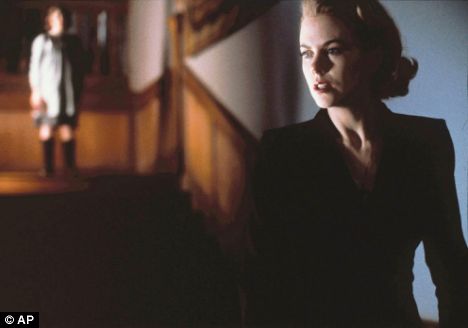
I’ve recently read, with great interest, Tom C. Hunley’s Teaching Poetry Writing: A Five-Canon Approach (Multilingual Matters Ltd., 2007). My interest in this book is twofold: 1) I’m personally attracted to the alternative pedagogical system the book espouses, and 2) I think Hunley’s ideas in this book jibe nicely with an effort to incorporate greater focus on poetic structure and turns into poetry writing classes.
The big idea of Teaching Poetry Writing (TPW) is simple: we need to replace a largely ineffective workshop model in our poetry writing classes with what Hunley calls the “five-canon model.” TPW’s first chapter (the title of which, “It Doesn’t Work for Me: A Critique of the Workshop Approach to Teaching Poetry Writing and a Suggestion for Revision,” says it all) largely is a critique of the workshop model, arguing, “The workshop model was not designed with undergraduates or the ruck of graduate students in mind. It was designed for gifted, elite writers who needed very little instruction, though they may have benefited from criticism on their manuscripts.” Knowing that it is not enough to simply critique the workshop model without offering another model which might replace it, Hunley suggests organizing a poetry writing class around the five canons of rhetoric: invention, arrangement, style, memory, and delivery. That is, according to Hunley, poetry writing classes need to devote much more time to in-class prewriting activities, collaborations, formal play and stylistic imitations, and to the memorization and performing of poems. (Workshopping and the offering of detailed, specific critiques, according to Hunley, can best be handled in conferences and online, employing instructional technologies such as Blackboard.)
I agree wholeheartedly with Hunley’s take on the need to replace the workshop model. And I agree very largely with Hunley’s pointing teachers in the direction of an alternative method like the five-canon model. My own experiences teaching undergraduate poetry writing have confirmed how ineffective the workshop model tends to be, and so I have taken steps in my own teaching to try something new. Interestingly, my own choices largely have coincided with much of what Hunley suggests. For example, I now do a LOT in terms of sharing invention strategies with students, and allowing students to practice some of those strategies in class. And very often I match text-generating invention strategies with a poetic form to help students consider the methods with and by which they might craft their poems. In fact, one of the big goals of my pedagogy is to get students to see that one very fruitful way to conceive of the task of the poet is to conceive of the poet as someone who gives her/himself creative assignments and then works to complete those assignments. The pay-off for this kind of approach is immediate: students bring better work and thinking to the drafts of their poems, so, when we actually do discuss them, the drafts generally already are working in some big, vital ways. (So far, I have not done much with memorization and delivery in the poetry writing class; however, I do teach a literature class called “Poetry through Performance,” and through the experience of teaching that course I know what a powerful pedagogical technique the performance of poetry can be—encouraged by Hunley’s writing, I will certainly consider employing this methodology in my poetry writing classes.)
TPW strikes me as offering something vital for poetry writing pedagogy now—anyone starting to teach poetry writing or beginning to re-think their own poetry writing pedagogy should carefully attend to it. TPW does the massive work of suggesting the need for a paradigm shift in poetry writing pedagogy, and it does the vital detail work of offering a lot of specific guidance in terms of how to pull off such a shift: specific exercises, specific technologies, specific texts.
Although not mentioned in TPW (perhaps because the books were published in the same year), I think Structure & Surprise, along with many of the other poetry writing books cited and referenced by Hunley, offers many insights applicable to teaching using the five-canon approach.
S&S is most applicable to the second canon, arrangement. Citing Covino and Jolliffe’s Rhetoric: Concepts, Definitions, Boundaries (Allyn & Bacon, 1995), Hunley notes, “Arrangement occurs in rhetoric when ‘the arguments devised through invention are placed in the most effective order.’ It is ‘the art of ordering the material in a text so that it is most appropriate for the needs of the audience and the purpose the text is designed to accomplish.’” According to Hunley (who cites the Encyclopedia of Rhetoric and Composition), “Rhetoric’s second canon, arrangement…is ‘the art of dividing a discourse into its parts and the inclusion, omission, or ordering of those parts according to the rhetor’s needs and situation and constraints of the chosen genre.’ The least written about of the five canons, arrangement has always been a sort of neglected middle child, rarely stealing the spotlight away from invention and style, its attention-grabbing siblings on either side.”
Although structure is touched on in a section of TPW called “Arrangement in the Rhetorical Tradition” (in which it is noted, “In classical rhetoric, orators traditionally arranged their speeches into five parts: exordium, narratio, confirmatio, refutatio, peroratio”) and in some of the “Practical Classroom Applications” that grow out of this section, the methods for arranging the content of a poem offered in TPW focus mainly on poetic form, as is indicated by the section title “Arranging Poetry in the Verse Mode: Traditional Forms.” Additionally, the section called “Arranging Poetry in the Prose Mode: Free Verse” also is largely about form, focusing on kinds of poetic lines and line breaks. This is, of course, fitting: for a long time now, form has seemed generally to be the way to arrange poems, and form of course offers powerful tools for such arrangement. However, I’d simply add that poetic structure, attention to the patterns of turns in poems, offers a significant additional way to think about the arrangement of poems, its own practical pedagogical applications (see this blog’s “Pedagogy” page for links to this developing conversation), and a reminder: non-formal arrangement is not only a concern primarily for rhetors but also for poets, who for a long time (Eliot calls the turn “one of the most important means of poetic effect since Homer”) have arranged poems—both formal and free—around turns.
With Teaching Poetry Writing, Tom Hunley has given me a name for what I do (or am trying to do) in my poetry writing classes, and he has given me lots of new information and methods for my teaching. Perhaps, for others interested in Hunley’s approach to teaching poetry writing, Structure & Surprise (and this blog) can serve as a kind of supplement to the pedagogical model presented in Teaching Poetry Writing, offering helpful ways to think about and to teach another key means of arranging poems: poetic structure, the pattern of turning in poems.


